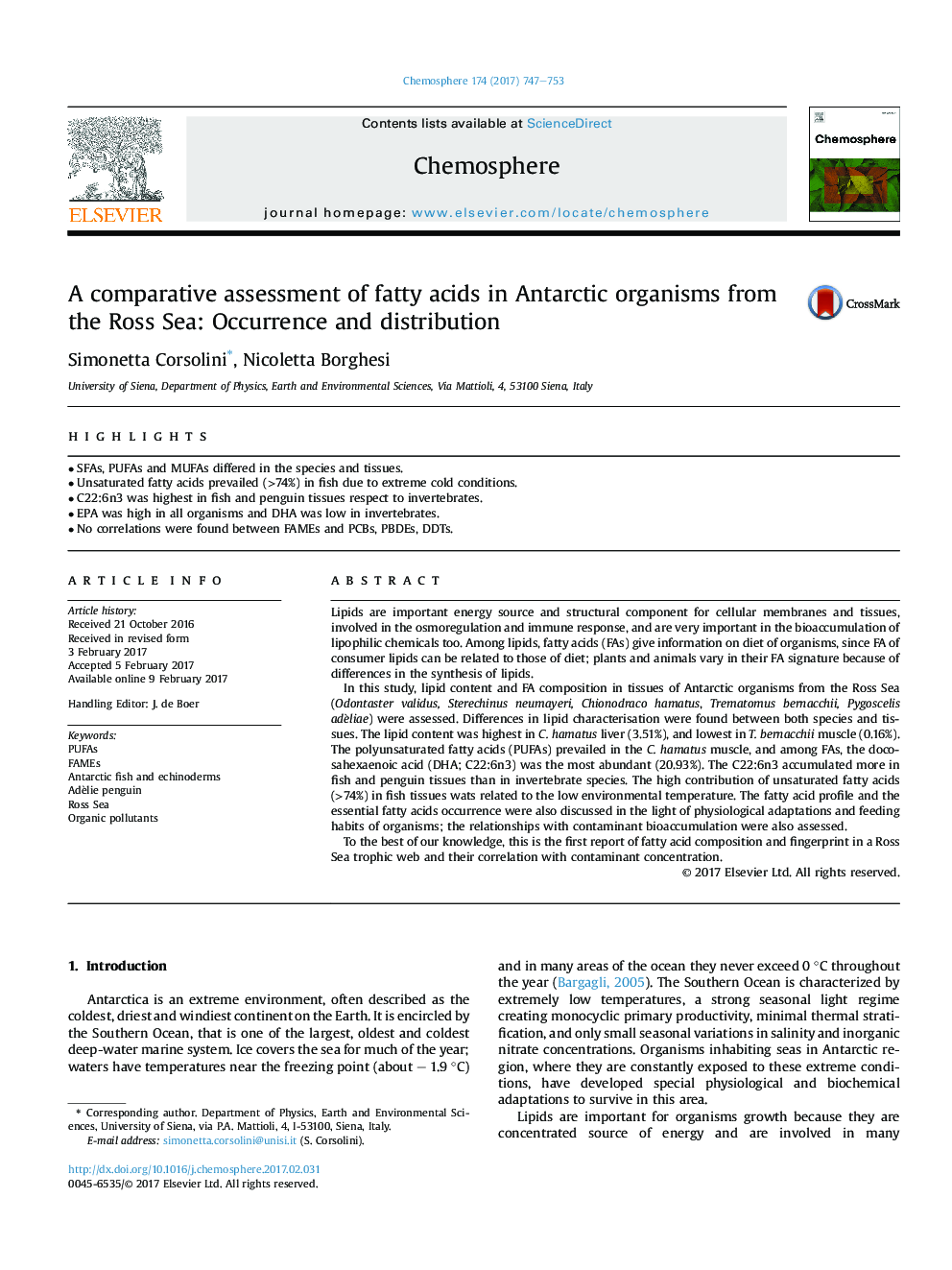| کد مقاله | کد نشریه | سال انتشار | مقاله انگلیسی | نسخه تمام متن |
|---|---|---|---|---|
| 5747364 | 1618797 | 2017 | 7 صفحه PDF | دانلود رایگان |
- SFAs, PUFAs and MUFAs differed in the species and tissues.
- Unsaturated fatty acids prevailed (>74%) in fish due to extreme cold conditions.
- C22:6n3 was highest in fish and penguin tissues respect to invertebrates.
- EPA was high in all organisms and DHA was low in invertebrates.
- No correlations were found between FAMEs and PCBs, PBDEs, DDTs.
Lipids are important energy source and structural component for cellular membranes and tissues, involved in the osmoregulation and immune response, and are very important in the bioaccumulation of lipophilic chemicals too. Among lipids, fatty acids (FAs) give information on diet of organisms, since FA of consumer lipids can be related to those of diet; plants and animals vary in their FA signature because of differences in the synthesis of lipids.In this study, lipid content and FA composition in tissues of Antarctic organisms from the Ross Sea (Odontaster validus, Sterechinus neumayeri, Chionodraco hamatus, Trematomus bernacchii, Pygoscelis adèliae) were assessed. Differences in lipid characterisation were found between both species and tissues. The lipid content was highest in C. hamatus liver (3.51%), and lowest in T. bernacchii muscle (0.16%). The polyunsaturated fatty acids (PUFAs) prevailed in the C. hamatus muscle, and among FAs, the docosahexaenoic acid (DHA; C22:6n3) was the most abundant (20.93%). The C22:6n3 accumulated more in fish and penguin tissues than in invertebrate species. The high contribution of unsaturated fatty acids (>74%) in fish tissues wats related to the low environmental temperature. The fatty acid profile and the essential fatty acids occurrence were also discussed in the light of physiological adaptations and feeding habits of organisms; the relationships with contaminant bioaccumulation were also assessed.To the best of our knowledge, this is the first report of fatty acid composition and fingerprint in a Ross Sea trophic web and their correlation with contaminant concentration.
Journal: Chemosphere - Volume 174, May 2017, Pages 747-753
